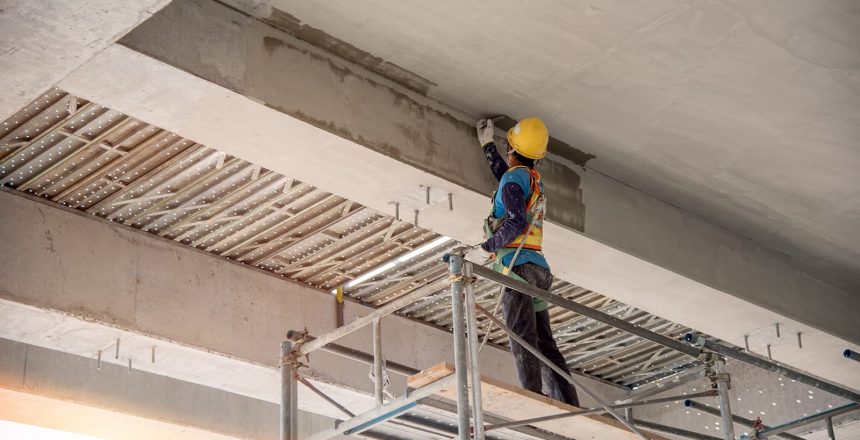Take a quick trip downtown and you notice that concrete is ubiquitous. It’s the sidewalks, signage, parking structures, and roads. But tilt your head up, and you find that concrete is also in the buildings. For thousands and thousands of years, concrete has been one of the most used and most reliable building materials, and for it to stay that way, it sometimes needs special attention.
The importance of concrete repair is almost as vital as the initial construction. In both commercial and residential buildings, concrete is integral in the appearance, structure and sustainability. If that concrete becomes damaged, worn down or cracked, that building’s support becomes weakened. That is why you need to repair that concrete quickly and call the professionals.
Concrete restoration refers to repairing old or damaged concrete. That process is necessary to help your structure return to its original appearance, and to help reinforce the structural integrity. The idea of concrete repair usually only involves fixing structural issues, concrete restoration also focuses on the aesthetics.
You don’t need to build an entirely new building to have that look of new construction. Concrete restoration can return that look to its original glory, and at a much smaller cost. Problems rarely get out of hand when you stay on top of keeping your building’s concrete in great condition. Because concrete restoration is less expensive than new construction, preventing potential problems becomes more manageable, thus keeping customers and employees out of risk.
There are so many reasons concrete damage might happen. First off, repairing any structural damage should be the biggest concern. Structural or physical damage could happen as early casting or de-shuttering. Walls or slabs can also experience expansion or contraction during extreme temperatures.
When left unchecked or unrepaired, concrete can disintegrate. This is chemical damage, which can be caused by carbonation. Chlorides can also cause degradation, in particular calcium chloride. Water damage can happen in a few different ways as well. Leaching is when water streams through the cracks that are already present in concrete, and that water dissolves the minerals that hardened the cement. If concrete is exposed to seawater, it can also experience corrosive effects.
Corrosion can also harm areas of reinforcement. The expansion of corrodible products of carbon steel reinforcement can involve mechanical stress, which will then create cracks and can unsettle concrete structures.
Other factors that could cause damage to concrete include fire damage, blast damage, seismic damage, a lack of reinforcement, and an excessive load amount. No matter what the cause, addressing the issue as quickly as possible will lead to the best results.
To get a quote on your concrete restoration needs, call DC Byers Company/Grand Rapids today at (616) 538-7300. Our experience and expertise allow us to assess the damage correctly and plan how to perform the repairs to allow you to use your space properly.
For concrete restoration and repair, DC Byers Company/Grand Rapids looks at all the factors contributing to the deterioration of the concrete. By understanding the underlying problems, we can start working on the most satisfying and cost-effective solutions.
